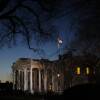Over the past three months, we have witnessed phenomenal bottom-up leadership from governors and mayors in the vacuum created by the federal government’s inept response to the COVID-19 pandemic. As we look toward September and the presumed reopening of K-12 schools, we should follow this exemplary model of leadership by including teachers in the reopening planning process.
Right now, we know very little about what to expect in September. The “Reopening Massachusetts” document released recently only says that details for the 2020-21 school year “will be shared with the public in the weeks to come.” What we do know is that the people making these plans have been largely pulled from the same class of thinkers—business leaders, philanthropists, academics, and policymakers—who brought us “No Child Left Behind,” otherwise known in some circles as “No Teacher Left Standing.” From NCLB to Common Core to Every Student Succeeds Act, which is the current federal education reform law, the ill-defined concept of “21st-century learning” is held up as the ultimate goal.
We were promised that 21st-century learning would close the opportunity gap and produce the largest generation ever of career- and college-ready students. In practice, it has been a miserable failure. All it took to reveal this was a global pandemic.
The abrupt closure of our schools and the frenzied pivot to remote and online learning has been a trial by fire. Ironically, it’s also been a true experiment in 21st-century learning. Educators have innovated on the fly, mastered new technologies, and brought students and families along. We’ve experimented with ways to create virtual learning communities. We’ve found ways to account for individual learning needs remotely. Most significantly, we’ve dramatically extended our reach by responding to a wider range of student and family needs. We’ve found creative ways to continue delivering basic safety net services, such as feeding our students, and we’ve confronted some of the long-ignored inequities in access to education by ensuring that every student has a computer and Internet access at home.
Some of the logistical challenges of reopening our schools are daunting. If temperature checks are part of the “new normal,” how can we do that quickly and efficiently at the start of the day while avoiding long and crowded lines of students? How can we minimize crowding on busses and during lunch periods? More important, if remote and online learning remain a part of the mix, as they likely will in higher grades, how can we ensure the highest quality of instruction?
After what I’ve seen from every level of the educational system over the past 12 weeks, I will be skeptical of ideas that emerge from the class that brought us “21st-century learning” as an organizing principle. But I’m very interested in hearing from teachers, whose ideas will be informed by their experiences and experiments conducted over these past three months.
In my own school, teachers have experimented continuously. When something doesn’t work, they’ve tried something new. Nearly all of them have adapted to use their “live” time with students as an opportunity to check in on how they’re coping with having to stay at home and not see their friends. These opportunities for students to process what’s going on in the world have become an important part of the live teaching sessions. As a result, teachers are finding that their students are sharing more with them and each other, and new connections are being built. Teachers are also reporting that building and supporting community in this way has incredible pedagogical value.
The COVID-19 pandemic has brought an unthinkable loss of lives, health, and immense disruption to our economy and systems of education. But this crisis has also given us an opportunity. Getting through this pandemic to whatever the future holds will require expertise in 21st-century learning. For that, we need to turn to our teachers.
When school districts receive the state’s plan to reopen K-12 schools, most of them will form committees and work groups to oversee the plan’s implementation. Those that are ultimately the most successful will be those who include teachers as leaders in this process.
Linda Croteau is an assistant principal working at a public middle school in Massachusetts.




